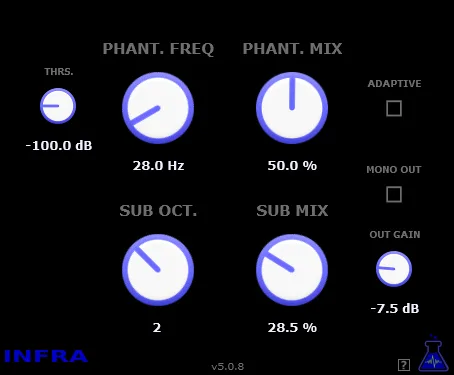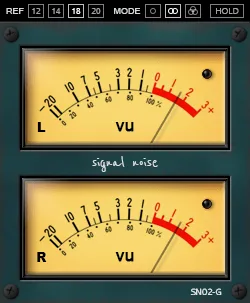Makunouchi Bento: The Flavor of Sound Experiments by Big Tick
In the world of music production and sound design, there’s always room for innovation and unexpected solutions. The Makunouchi Bento plugin from developer Big Tick is such a tool, capable of transforming a regular audio signal into something completely new and unique. Forget about standard effects; Makunouchi Bento offers an immersion into the world of experimental modulation and filtering.
The Core of Sound Transformations
At the heart of Makunouchi Bento’s operation lies the principle of ring modulation. However, this plugin approaches the process unconventionally. Instead of a fixed modulation frequency, it uses sinusoidal waves with a constantly changing frequency. This is the key feature that distinguishes Makunouchi Bento from many other modulation effects and opens the way to an extremely rich and often unpredictable soundscape.
What is ring modulation? It is a process that multiplies the input audio signal by the modulator signal. The result is the emergence of new frequencies that are the sums and differences of the input signal and modulator frequencies. At a constant modulator frequency, you get static, often metallic or robotic timbres. But when the modulator frequency constantly fluctuates, as in Makunouchi Bento, the result becomes dynamic, fluid, capable of evolving over time.
After passing through the ring modulation stage, the processed signal enters a state-variable filter. This type of filter is known for its flexibility and the ability to simultaneously provide different types of filtering (low-pass, high-pass, band-pass, notch). In Makunouchi Bento, the filter plays the role not just of a corrector, but rather a timbre shaper, allowing you to “sculpt” the final sound, emphasize certain harmonics (or, rather, non-harmonics created by modulation) or remove unwanted artifacts.
Unexpected Results and Creative Possibilities
The combination of dynamic ring modulation and a flexible filter makes Makunouchi Bento an instrument for real sound adventures. The plugin’s description doesn’t mention “unexpected effects” for nothing. And it’s true! Predicting the exact result in advance can be difficult, which is, in fact, part of its charm.
What sounds can you get?
- Stuttering rhythms: When processing percussive or rhythmic signals, the variable modulation frequency can interact with the attack and sustain of sounds, creating a stuttering, stumbling, or interesting, uneven patterns that are difficult to create in other ways.
- Ambient tones: By processing sustained sounds – synth pads, guitar drones, vocals – the plugin can create evolving, moving soundscapes. Ring modulation adds complex, often dissonant overtones, and the filter helps transform this chaos into a controlled, hypnotic texture.
- Metallic and ringing timbres: The classic ring modulation effect is present here as well, but with the addition of dynamics. You can get sounds similar to bells, metallic strikes, or robotic voices that are constantly transforming.
- Experimental sound effects: The plugin is perfect for creating unique sound effects for film, games, or audio production where a sound that stands out is needed.
Makunouchi Bento is not a plugin for everyday use in every track. It’s more of a secret weapon for those moments when you need a unique sound signature, when you want to go beyond standard sounds and add an element of unpredictability and experimentation to your music. Its simple interface (often found in plugins from Big Tick) shouldn’t mislead you – a powerful and creative engine is hidden under the hood.
Technical Details
The Makunouchi Bento plugin is available in VST format and is compatible with the Windows (32-bit) operating system. This means it can be used in most digital audio workstations (DAWs) that support this format on the specified platform.
If you are looking for a tool that can break down familiar sound barriers and inspire new creative ideas, Makunouchi Bento from Big Tick is worth your attention. It is a testament to the fact that sometimes the most interesting effects are born at the intersection of familiar principles and non-standard approaches to their implementation.



